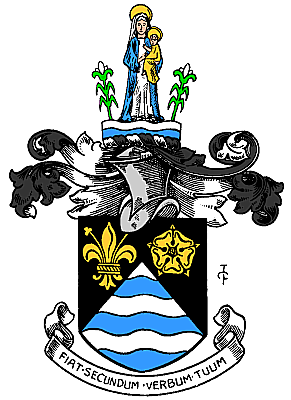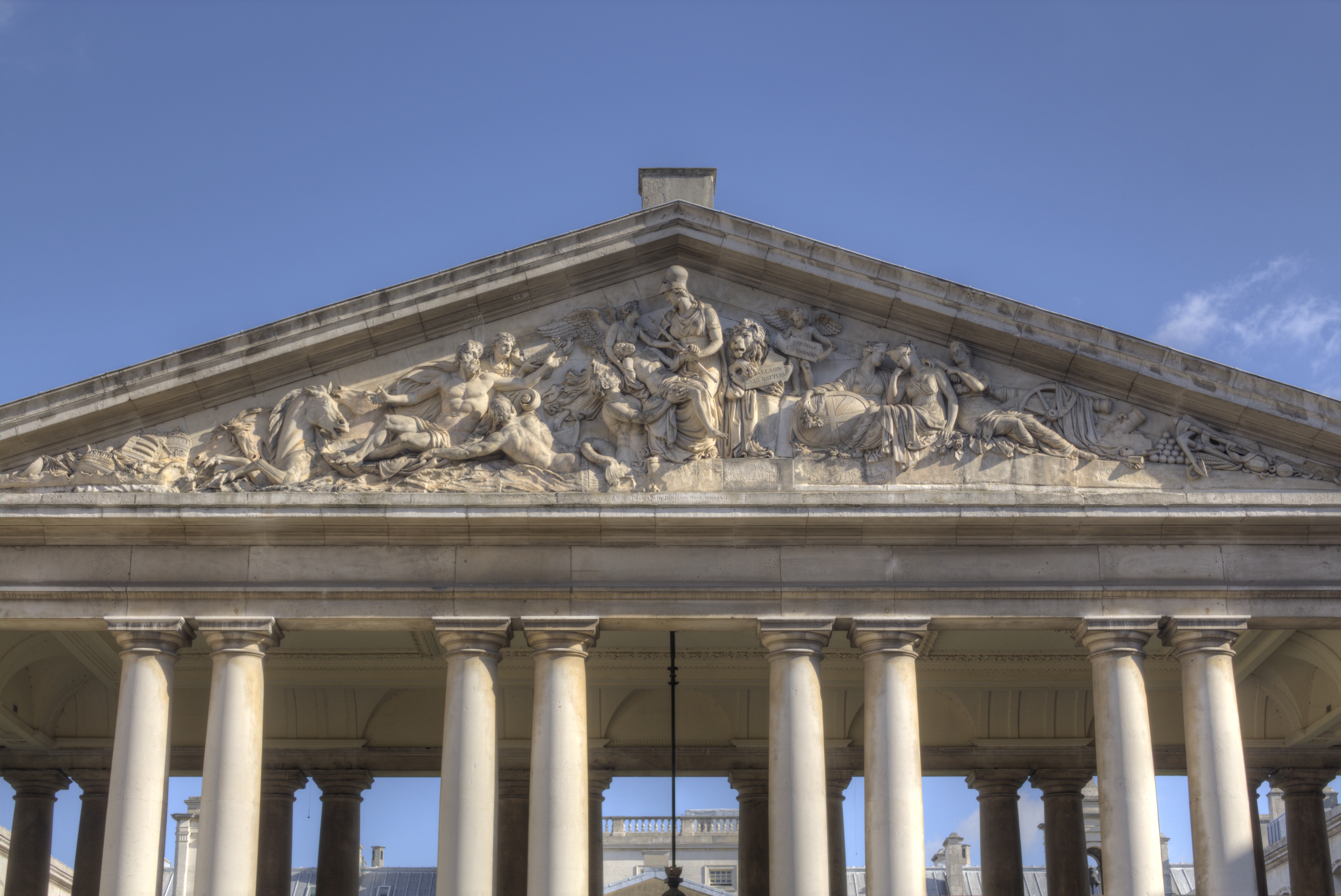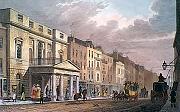|
Portman Square
Portman Square is a garden square in Marylebone, central London, surrounded by townhouses. It was specifically for private housing let on long leases having a ground rent by the Portman Estate, which owns the private communal gardens. It marks the western end of Wigmore Street, which connects it to Cavendish Square to the east. History Context and development It was built between 1765 and 1784 on land belonging to Henry William Portman. An infantry barracks, Portman Square Barracks, was built between Portman and Orchard Streets; it was demolished in about 1860. At the east end of the garden, thus marking one end of Baker Street and of Orchard Street (a short link to Oxford Street) is the Hamilton Memorial Drinking fountain. This was provided by Mariana Augusta, under the auspices of the Metropolitan Drinking Fountain and Cattle Trough Association, in honour of her late husband Sir John James Hamilton, 2nd Baronet, briefly MP for Sudbury. The fountain is statutorily prot ... [...More Info...] [...Related Items...] OR: [Wikipedia] [Google] [Baidu] |
Marylebone
Marylebone (usually , also ) is an area in London, England, and is located in the City of Westminster. It is in Central London and part of the West End. Oxford Street forms its southern boundary. An ancient parish and latterly a metropolitan borough, it merged with the boroughs of Westminster and Paddington to form the new City of Westminster in 1965. Marylebone station lies two miles north-west of Charing Cross. The area is also served by numerous tube stations: Baker Street, Bond Street, Edgware Road (Bakerloo line), Edgware Road (Circle, District and Hammersmith & City lines), Great Portland Street, Marble Arch, Marylebone, Oxford Circus, and Regent's Park. History Marylebone was an Ancient Parish formed to serve the manors (landholdings) of Lileston (in the west, which gives its name to modern Lisson Grove) and Tyburn in the east. The parish is likely to have been in place since at least the twelfth century and will have used the boundaries of the pre- ... [...More Info...] [...Related Items...] OR: [Wikipedia] [Google] [Baidu] |
Alexander Hamilton, 10th Duke Of Hamilton
Alexander Hamilton, 10th Duke of Hamilton, 7th Duke of Brandon (3 October 1767 – 18 August 1852), styled as the Earl of Angus until 1799 and Marquess of Douglas and Clydesdale from 1799–1819, was a Scottish politician and art collector. Life Born on 3 October 1767 at St. James's Square, London, the eldest son of Archibald Hamilton, 9th Duke of Hamilton, he was educated at Harrow School and at Christ Church, Oxford, where he matriculated on 4 March 1786. He received his MA on 18 February 1789. Hamilton was a Whig, and his political career began in 1802, when he became MP for Lancaster. He remained in the House of Commons until 1806, when he was appointed to the Privy Council, and Ambassador to the court of St. Petersburg until 1807; additionally, he was Lord Lieutenant of Lanarkshire from 1802 to 1852. He received the numerous titles at his father's death in 1819. He was Lord High Steward at King William IV's coronation in 1831 and Queen Victoria's coronation in 1838, ... [...More Info...] [...Related Items...] OR: [Wikipedia] [Google] [Baidu] |
Courtauld Institute
The Courtauld Institute of Art (), commonly referred to as The Courtauld, is a self-governing college of the University of London specialising in the study of the history of art and conservation. The art collection is known particularly for its French Impressionist and Post-Impressionist paintings and is housed in the Courtauld Gallery. The Courtauld is based in Somerset House, in the Strand in London. In 2019, the Courtauld's teaching and research activities temporarily relocated to Vernon Square, London, while its Somerset House site underwent a major regeneration project. History The Courtauld was founded in 1932 through the philanthropic efforts of the industrialist and art collector Samuel Courtauld, the diplomat and collector Lord Lee of Fareham, and the art historian Sir Robert Witt. Originally the Courtauld was based in Home House, a townhouse designed by Robert Adam in Portman Square, Marylebone. The Strand block of Somerset House, designed by William Cham ... [...More Info...] [...Related Items...] OR: [Wikipedia] [Google] [Baidu] |
Elizabeth, Countess Of Home
Elizabeth Home, Countess of Home (''née'' Gibbons; 1703/04 – 15 January 1784) was a Jamaican-born heiress, noblewoman and absentee plantation owner. Already rich from her merchant father, she married James Lawes, the eligible son of Jamaica's governor, in 1720. They moved to London, and his death in 1734 left her a wealthy widow. Home married the spendthrift William Home, 8th Earl of Home in late 1742. He abandoned her soon after, and she spent her next years living an extravagant lifestyle. She owned plantations in the parishes of St Andrew and Vere in Jamaica, owning over 423 slaves on her plantations. Home earned the nickname "Queen of Hell" for her "irascible behaviour and lavish parties". During the 1770s, Lady Home commissioned James Wyatt (and later the brothers Robert and James Adam) to design Home House, a lavish town house in Portman Square, London. It was then considered to have one of the finest interiors in London and still remains today. She died in 1784 and ... [...More Info...] [...Related Items...] OR: [Wikipedia] [Google] [Baidu] |
Robert Adam
Robert Adam (3 July 17283 March 1792) was a British neoclassical architect, interior designer and furniture designer. He was the son of William Adam (architect), William Adam (1689–1748), Scotland's foremost architect of the time, and trained under him. With his older brother John Adam (architect), John, Robert took on the family business, which included lucrative work for the Board of Ordnance, after William's death. In 1754, he left for Rome, spending nearly five years on the continent studying architecture under Charles-Louis Clérisseau and Giovanni Battista Piranesi. On his return to Britain he established a practice in London, where he was joined by his younger brother James Adam (architect), James. Here he developed the "Adam Style", and his theory of "movement" in architecture, based on his studies of antiquity and became one of the most successful and fashionable architects in the country. Adam held the post of Office of Works, Architect of the King's Works from 176 ... [...More Info...] [...Related Items...] OR: [Wikipedia] [Google] [Baidu] |
Home House
Home House is a Georgian town house at 20 Portman Square, London. James Wyatt was appointed to design it by Elizabeth, Countess of Home in 1776, but by 1777 he had been dismissed and replaced by Robert Adam. Elizabeth left the completed house on her death in 1784 to her nephew William Gale, who in turn left it to one of his aunts, Mrs Walsh, in 1785. Its later occupants included the Marquis de la Luzerne during his time as French ambassador to the Court of St. James's (1788 to 1791), the 4th Duke of Atholl (1798 to 1808), the 4th Duke of Newcastle (1820 to 1861), Sir Francis Henry Goldsmid (1862 to 1919), and Lord and Lady Islington (1919 to 1926). In 1926, it was leased by Samuel Courtauld to house his growing art collection. On his wife's death in 1931, he gave the house and the collection to the fledgling Courtauld Institute of Art (which he had played a major part in founding) as temporary accommodation. A permanent accommodation was not forthcoming, and the ... [...More Info...] [...Related Items...] OR: [Wikipedia] [Google] [Baidu] |
Coade Stone
Coade stone or ''Lithodipyra'' or ''Lithodipra'' () is stoneware that was often described as an artificial stone in the late 18th and early 19th centuries. It was used for moulding neoclassical architecture, neoclassical statues, architectural decorations and garden ornaments of the highest quality that remain virtually weatherproof today. Coade stone features were produced Royal Warrant of Appointment (United Kingdom), by appointment to George III of the United Kingdom, George III and the George IV of the United Kingdom, Prince Regent for St George's Chapel, Windsor; Royal Pavilion, The Royal Pavilion, Brighton; Carlton House, London; the Royal Naval College, Greenwich; and refurbishment of Buckingham Palace in the 1820s. Coade stone was prized by the most important architects such as: John Nash (architect), John Nash-Buckingham Palace; Sir John Soane-Bank of England; Robert Adam-Kenwood House; and James Wyatt-Radcliffe Observatory. The product (originally known ... [...More Info...] [...Related Items...] OR: [Wikipedia] [Google] [Baidu] |
Samuel Wyatt
Samuel Wyatt (8 September 1737 – 8 February 1807) was an English architect and engineer. A member of the Wyatt family, which included several notable 18th- and 19th-century English architects, his work was primarily in a neoclassical style. Career In his twenties, Wyatt was master carpenter and later Robert Adam's clerk of works at Kedleston Hall in Derbyshire, which was a landmark in English neoclassical architecture. He later worked with his brother James Wyatt on the Pantheon in Oxford Street, London. He designed neoclassical country houses such as Tatton Park in Cheshire, and Trinity House in London and Digswell House in Hertfordshire. Wyatt's career was diverse. He designed the Albion Mills in London, which was the first in the world to be powered by steam engines, and patented designs for cast iron bridges. He designed model farm buildings, cottages, and several lighthouses, including those at Dungeness, Longships and Flamborough Head. Between 1784 and 1807 Samuel w ... [...More Info...] [...Related Items...] OR: [Wikipedia] [Google] [Baidu] |
James Wyatt
James Wyatt (3 August 1746 – 4 September 1813) was an English architect, a rival of Robert Adam in the Neoclassicism, neoclassical and neo-Gothic styles. He was elected to the Royal Academy of Arts in 1785 and was its president from 1805 to 1806. Early life Wyatt was born on 3 August 1746 at Weeford, near Lichfield, Staffordshire, England. Early classical career Wyatt spent six years in Italy, 1762–68, in company with Richard Bagot of Staffordshire, who was Secretary to Charles Compton, 7th Earl of Northampton's embassy to the Venetian Republic. In Venice, Wyatt studied with Antonio Visentini (1688–1782) as an architectural draughtsman and painter. In Rome he made measured drawings of the dome of St. Peter's Basilica, "being under the necessity of lying on his back on a ladder slung horizontally, without cradle or side-rail, over a frightful void of 300 feet". Back in England, his selection as architect of the proposed Pantheon (London), Pantheon or "Winter Ranelegh ... [...More Info...] [...Related Items...] OR: [Wikipedia] [Google] [Baidu] |
Alexander Duff, 1st Duke Of Fife
Alexander () is a male name of Greek origin. The most prominent bearer of the name is Alexander the Great, the king of the Ancient Greek kingdom of Macedonia who created one of the largest empires in ancient history. Variants listed here are Aleksandar, Aleksander, Oleksandr, Oleksander, Aleksandr, and Alekzandr. Related names and diminutives include Iskandar, Alec, Alek, Alex, Alexsander, Alexandre, Aleks, Aleksa, Aleksandre, Alejandro, Alessandro, Alasdair, Sasha, Sandy, Sandro, Sikandar, Skander, Sander and Xander; feminine forms include Alexandra, Alexandria, and Sasha. Etymology The name ''Alexander'' originates from the (; 'defending men' or 'protector of men'). It is a compound of the verb (; 'to ward off, avert, defend') and the noun (, genitive: , ; meaning 'man'). The earliest attested form of the name, is the Mycenaean Greek feminine anthroponym , , (/ Alexandra/), written in the Linear B syllabic script. Alaksandu, alternatively calle ... [...More Info...] [...Related Items...] OR: [Wikipedia] [Google] [Baidu] |
William Henry Percy
The Honourable William Henry Percy (24 March 1788 – 5 October 1855) was a British Royal Navy officer and politician. Family Percy was the sixth son of Algernon Percy, 1st Earl of Beverley, and his wife, the former Isabella Susannah Burrell, daughter of Peter Burrell. Naval and political career Entering the navy as a first-class volunteer on board the 64 gun in May 1801 and going with it to China, Percy returned in November 1802 and was posted to as a midshipman. (Soon afterwards, his elder brother Josceline was appointed its appointed acting lieutenant.) He was promoted to Lieutenant in 1807. Promoted to commander in 1810, his first command was the troopship in 1811. Percy and ''Mermaid'' transported troops between Britain and Iberia for the Peninsular War). He was made post captain on 21 March 1812, but his next command (of the 20 gun during 1814, operating on the North American coast) came to grief when he lost 50 of his crew wounded or killed in an unsuccessful atta ... [...More Info...] [...Related Items...] OR: [Wikipedia] [Google] [Baidu] |
Sir Charles Asgill, 1st Baronet
Sir Charles Asgill, 1st Baronet (17 March 1714 – 15 September 1788) merchant banker, was the third son of Henry Asgill, silkman, of St Clement Danes, Middlesex and was educated at Westminster School. Asgill's Bank Apprenticed to the banking house of William Pepys & Co. he later became a partner in the firm of Vere and Asgill, bankers of Lombard Street, in the City of London, in 1740. In the early 1700s private banks operated from private houses. The first purpose-built bank in London was Asgill's at 70 Lombard Street. Designed by Sir Robert Taylor in 1757, it set a pattern for later banking houses. Asgill’s Bank traced its origins to the goldsmithing business of Glegg & Vere, formed in Lombard Street, London, in about 1730. When Glegg died, Joseph Vere took Charles Asgill into partnership and the firm was renamed Vere & Asgill in 1740. Vere left the partnership in 1753, when he became senior partner in the new bank of Vere, Glyn & Hallifax. The firm was known as Sir Ch ... [...More Info...] [...Related Items...] OR: [Wikipedia] [Google] [Baidu] |






